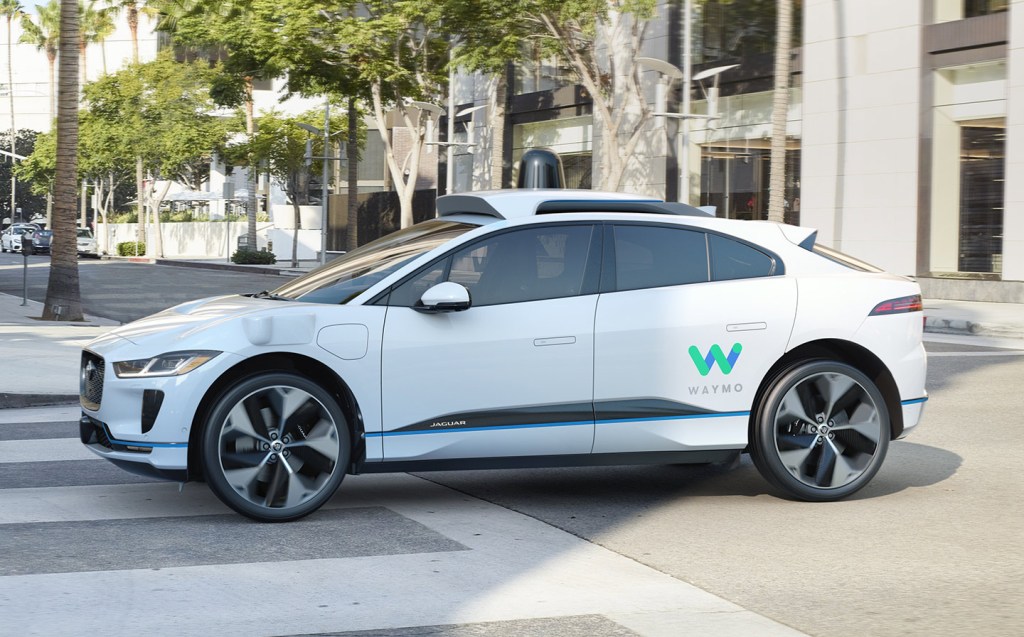Automonomous cars in spotlight as police officer attempts to pull over robotaxi
Incident unlikely to arrest development of driverless tech
While car manufacturers have gone relatively quiet over a future of self-driving cars, the technology is still being developed. One company that has progressed further than many is Waymo, a division of Google that has been researching and developing autonomous car tech since 2009.
Waymo has progressed far enough that it now offers self-driving taxi services in Phoenix, Arizona and San Francisco in America. But a recent incident in the desert city has highlighted that progress still needs to be made when it comes to how a so-called ‘robotaxi’ can handle unexpected situations.
TikTok user @johnnyromano3 uploaded footage of his experience when the driverless car in which he was travelling came across a road closure that had been put in place for a parade. A motorcycle cop is seen dismounting his bike and then using hand signals to tell the occupants of the vehicle (one of Waymo’s fleet of specially converted Jaguar I-Paces) to turn around.
@johnnyromano3 POV: youre in a self driving car and the police get involded
♬ original sound – Johnny Romano
With the car stopped in the middle of the road, the passengers were at pains to point out that they weren’t in control of the vehicle, while the car’s electronics decided what to do. Eventually the car worked out the situation and managed to turn around without further incident.

Romano confirmed that the Waymo had already tried to avoid the parade by turning around in another street and attempting to go around the block to avoid the road closure, only for it to end up near the front of the parade. “It knew how to respond and essentially try to avoid the parade,” Romano said. “When it came across the second police officer it figured out it needed to turn around.”
At the time of the incident, Romano received a call from Waymo customer support, which then stayed on the line until the vehicle arrived at his final destination.
A Waymo spokesperson confirmed that “the Waymo vehicle pulled to the side as desired, and then performed a multi-point turn and successfully manoeuvred out of the blocked lane within 90 seconds after the interaction with the police officer.”
The situation brings up questions about how autonomous driving technology can cope with situations such as roadworks or closures that are beyond the conventional road signs, lane markings, traffic signals and on-board mapping that is used to regulate a vehicle’s movements.
Waymo confirmed that it’s using ‘advanced machine learning’ to teach its vehicles how to react to unforeseen obstacles, including hand signals from police officers managing traffic.
Robotaxis are an emerging technology that has been developed mainly in the USA and China. Ride sharing firms such as Waymo and Uber have invested in the tech, while other start-ups and car manufacturers are also researching how autonomous driving can help to make driving easier and safer.
Current legislation in the UK means that self-driving cars can’t be used on the public highway. However, another step towards autonomous vehicles was made in April with the Department for Transport’s approval of Ford’s BlueCruise technology. This advanced adaptive cruise control system not only adjusts a car’s speed and distance from the car in front, but it also allows the driver to take their hands off the steering wheel because the car will take control of that, too.
It’s currently only offered on pre-mapped sections of UK motorways, but is another step on the path to autonomy.
Once the technology has progressed far enough and there is a proper legislative framework for its use, then autonomous ride-sharing is likely to become a common sight on UK roads, especially in urban areas.
Related articles
- After reading about how a driverless taxi responded to a traffic cop, you may want to check out what Hyundai’s boss said about flying cars
- Read about the British start-up planning 200 flying taxi hubs globally
- Or read more about how Ford got approval to allow hands-free driving on UK motorways
Latest articles
- Should I buy a diesel car in 2025?
- F1 2025 calendar and race reports: The new Formula One season as it happens
- Zeekr 7X AWD 2025 review: A fast, spacious and high tech premium SUV — but someone call the chassis chief
- Denza Z9GT 2025 review: Flawed but sleek 1,062bhp shooting brake from BYD’s luxury arm
- Extended test: 2024 Renault Scenic E-Tech review
- Best-selling cars 2025: The UK’s ten most popular models of the year so far
- Audi A6 Avant 2025 review: Trusty executive estate ticks expected boxes, and there’s still a diesel option
- Keir Starmer eases pressure on carmakers to sell EVs in response to ‘global economic headwinds’
- Ferrari 12Cilindri Spider review: Heady blend of traditional and futuristic becomes even more intoxicating after lid is removed














